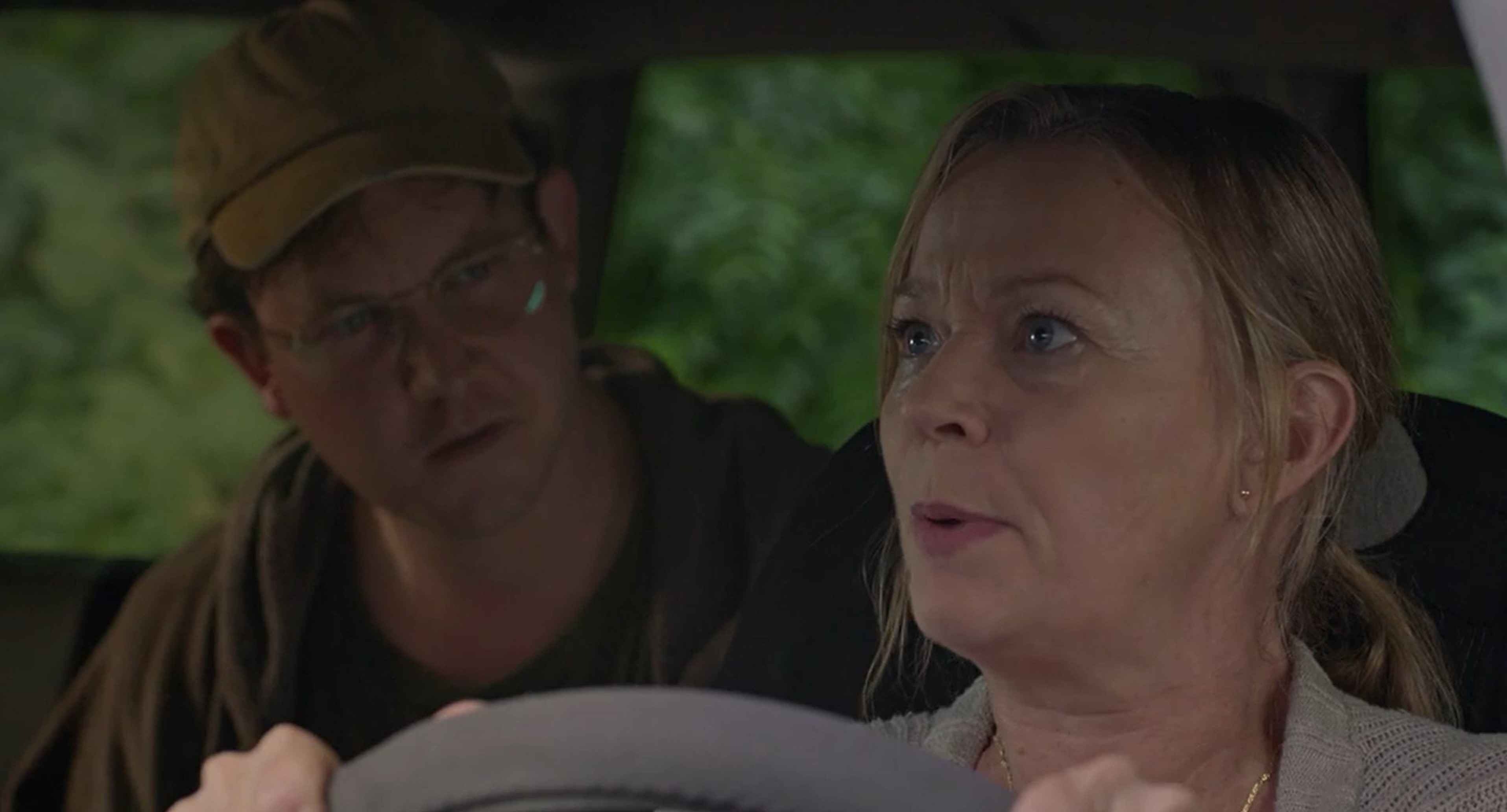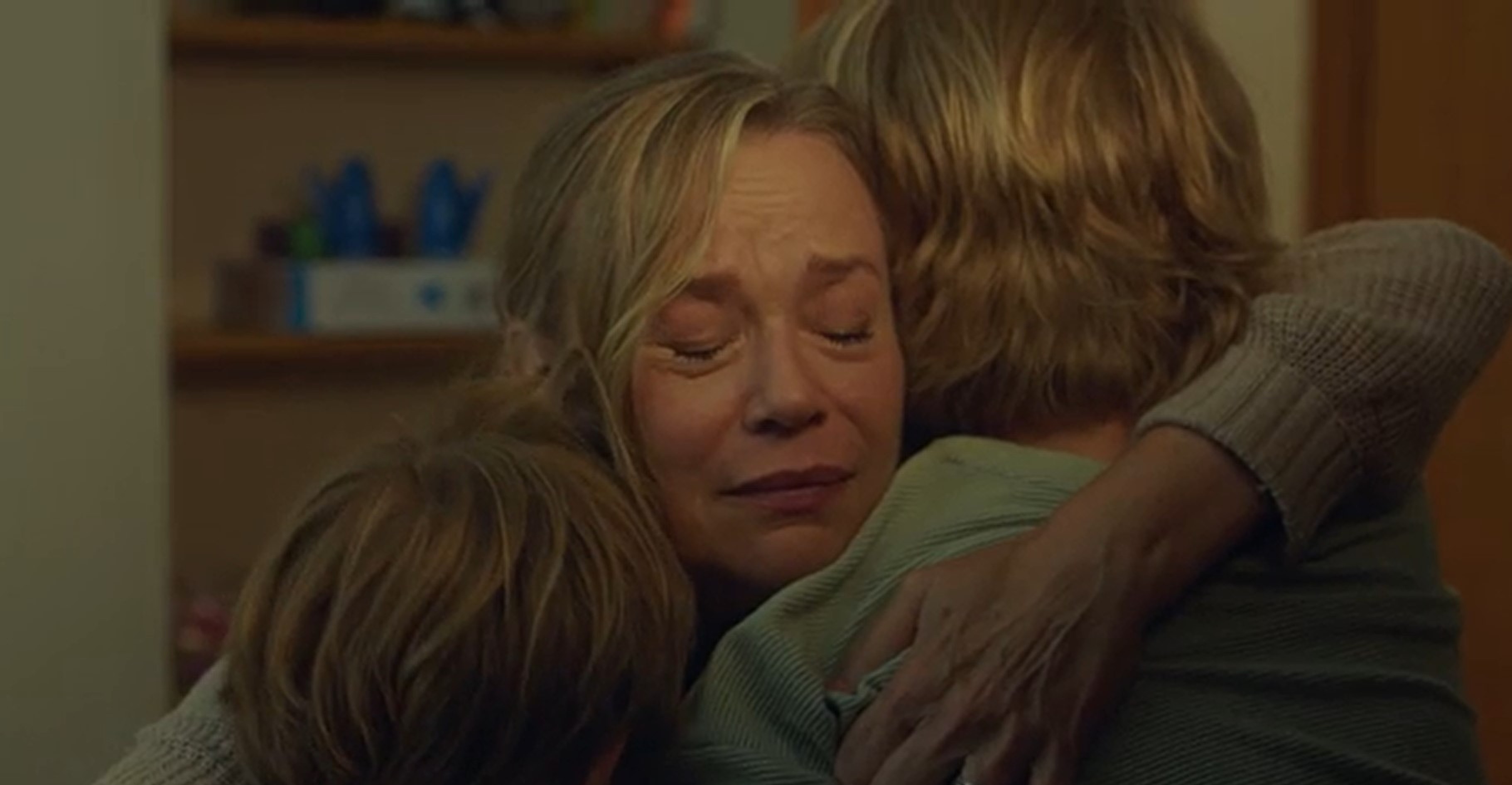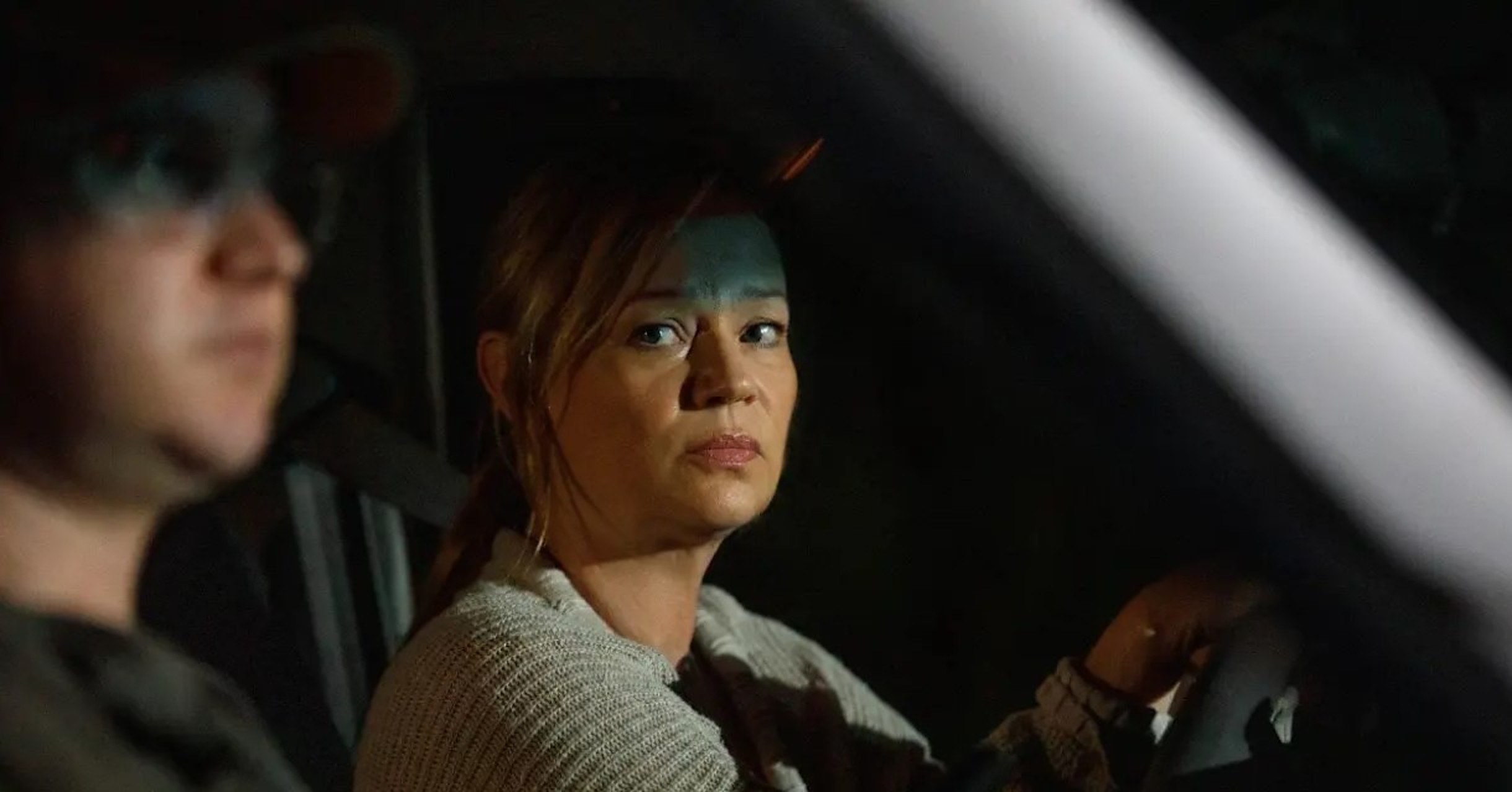Helmed by Gina Gershon, Lifetime’s ’12 Desperate Hours’ is a gripping thriller movie that chronicles a mother’s quest to safeguard her family from an unexpected and dangerous visitor. As Val and her young kids wait for her husband, Mark, to return home from work, a strange man named Denny breaks into their house. He is on the run after committing two murders earlier that day and decides to take the family hostage. Now, Val must do anything she can to protect her children from his dangerous intentions. Therefore, she plays along with him when he abducts her and forces her to drive him to his next stop.
Trouble ensues when Danny loses his mind, and Val tries her best to stop anyone else from getting hurt. Featuring compelling performances by actors like Samantha Mathis, Harrison Thomas, David Conrad, Lanz Duffy, and Leo Cocovinis, the Lifetime movie keeps the audience at the edge of their seats with its nail-biting suspense. Moreover, the realistic portrayal of a home invasion and a hostage situation begs one to ask if ’12 Desperate Hours’ is based on actual events.
12 Desperate Hours Adapted from Author Ann Rule’s True Crime Collection
Yes, ’12 Desperate Hours’ is based on a true story. A part of Lifetime’s ‘Ripped from the Headlines’ series, the movie is an adaptation of one of the four true crime stories from author Ann Rule’s ‘Last Chance, Last Dance’ collection. Screenwriters Connor Allyn and Benjamin Anderson have done a marvelous job of bringing the actual harrowing experiences of Patricia Jean Jaque, which Rule has documented in her anthology. A resident of Washington State, she was taken hostage along with her kids in 1963 by a man named Gary Lee Quinlivan. He was on the run after murdering his two people and sought refuge in Patricia’s home before forcing her to chauffer him to Tacoma.

On December 19, 1963, Seattle resident Gary decided to visit his then-girlfriend Joan Marlatt, who had recently ended things with him due to his allegedly abusive behavior and refusal to seek employment. At that time, she had moved back to Kent to live with her mother, Gladys Bodine. Despite Gary contacting Joan multiple times, she refused to respond, so he drove to her mother’s house to speak to her. While she was not home, Gladys asked him to leave immediately, resulting in a physical altercation.
As per later reports, Gary claimed that Gladys was alive when he left, but she was discovered dead from strangulation the next day. On December 20, 1963, he decided to make another trip to Kent and asked his friend, Fritz Donahue, to drive him there. Gary was carrying his belongings and a rifle this time, and the two men eventually lost their way on the road. Hence, they made a stop for him to relieve himself, and he allegedly started showing off the firearm to Fritz. According to Gary’s later statement, his friend accidentally slipped in the mud and pressed the trigger, making the rifle go off and kill him.
However, Fritz’s body was discovered soon after, and the autopsy revealed that the gunshot wound that killed him had likely been inflicted by someone who held the weapon at shoulder level and fired directly. When his friend died, Gary ran into the woods and stumbled upon a nearby residence where Patricia Jean Jaque lived with her husband and kids. While her spouse was away, the murderer broke into the house and held her and the children at gunpoint. Gary threatened to harm the kids unless Patricia drove him to Tacoma, and she had no option but to comply.
Luckily, Patricia’s car was somehow stopped by some police officers on the way, who noticed her nervous behavior and suspected that Gary was coercing her. Upon investigating closely, they realized she was being held at gunpoint and immediately rescued her. Patricia quickly shared how Gary had broken into her house and forced her to drive him to Tacoma, and he was arrested. Once she was safely sent back home, the police officers discovered she lived near where Fritz was found dead.

When Gary was interrogated, he initially insisted that Gladys was alive when he left and that Fritz died accidentally. Nevertheless, he eventually gave in and confessed that he had killed both. Gary faced charges of murder and kidnapping, yet he refused to plead guilty and entered a special plea by reason of insanity. In 1964, he was deemed unfit for trial and sent to the Eastern State Hospital. After being considered incapable of standing trial again, Gary was finally presented in court in 1971. He was convicted of the first-degree murder of Gladys Bodine, the second-degree murder of Fritz Donahue, and the abduction of Patricia Jean Jaque.
Albeit, Gary’s death penalty was overturned the following year. After a retrial in 1973, he was handed two concurrent life sentences for pleading guilty to two counts of second-degree murder. Since he had already spent more than nine years at the Eastern State Hospital and in prison since his arrest, his minimum parole eligibility term of twenty-five years was reduced. As per official records, Gary was released on parole in 1985 and died at 77 on August 21, 2011, in Renton. Speaking of the Lifetime thriller — it primarily focuses on Patricia Jean Jaque’s encounter with the killer, presenting it to the viewers through the story of Val and Denny.
In an interview with KTLA 5, director Gina Gershon confirmed that the movie is based on actual events chronicled in Ann Rule’s anthology. She also expressed her initial reaction when she learned about Gary Lee Quinlan. Gina stated, “It moved me. I’m just so sick of looking at the paper and reading about another mass shooting. I’m so disheartened to feel like these kids go to school, and they may never get out of school. It’s just horrible, we’ve failed as a society in America, and it’s just not getting better.”
“…There are many alienated, depressed, lonely guys who can so easily get their hands on guns, and especially when they have mental issues, it’s a really bad combination. I thought it would be interesting to tell it from almost his point of view to see how someone gets there,” Gina added. As shared by the director, the movie mostly sticks to its source material and accurately depicts what Patricia Jean Jaques endured on that fateful December day in 1963 when Gary invaded her home. However, several characters have been renamed, and some elements have been embellished for entertainment. Thus, it would be safe to say that the movie portrays facts with a dash of fiction.
Read More: Is Lifetime’s A Rose for Her Grave Based on a True Story?


You must be logged in to post a comment.